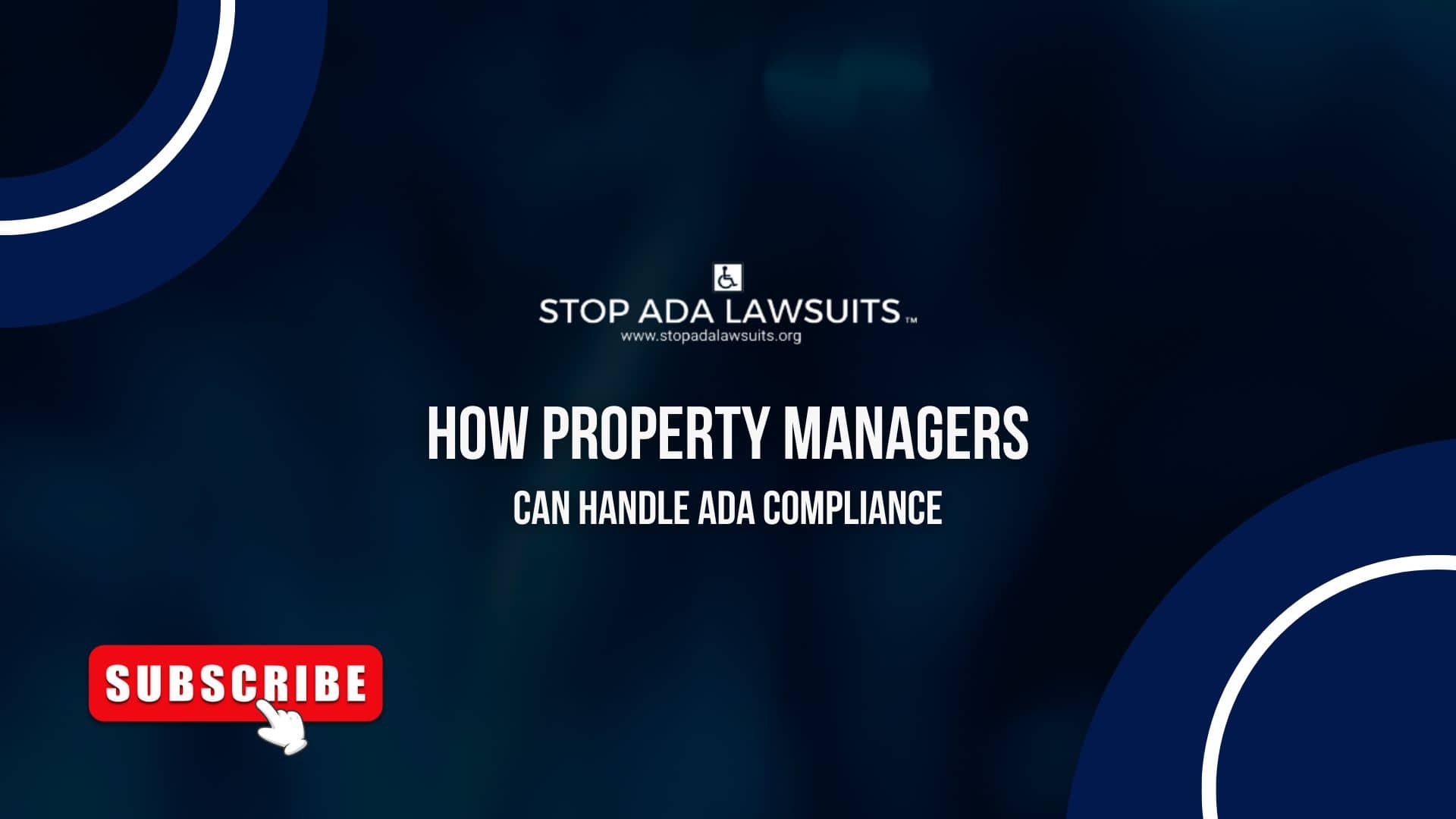
Managing properties involves juggling multiple responsibilities, from maintaining buildings to ensuring tenant satisfaction. One critical yet often overlooked aspect is ensuring compliance with the Americans with Disabilities Act (ADA). Failing to adhere to ADA regulations can lead to lawsuits, financial penalties, and damage to your reputation. Here’s how property managers can handle ADA compliance effectively.
Understanding ADA Compliance as a property manager
The ADA is a civil rights law designed to ensure individuals with disabilities have equal access to public spaces, goods, and services. For property managers, this means ensuring that properties meet accessibility standards in areas such as:
- Parking spaces
- Entrances and exits
- Restrooms
- Pathways and hallways
- Elevators (if applicable)
Understanding these requirements is the first step in compliance.
Conducting an ADA Audit as a property manager
Before you can address ADA compliance, you need to assess where your property currently stands. An ADA audit identifies areas that fall short of legal standards. Consider hiring an ADA specialist or consultant to ensure your evaluation is thorough and accurate. Key aspects to audit include:
- Accessible parking spots with proper signage
- Ramp and pathway slope measurements
- Door widths and thresholds
- Restroom fixtures and clearances
Prioritizing Repairs and Upgrades
Once you’ve identified non-compliant areas, prioritize the necessary improvements. Focus on high-traffic areas first, as these are the most likely to be scrutinized. Create a timeline and budget for addressing each issue, keeping in mind that some upgrades might require permitting or specialized contractors.
Staying Educated on ADA Standards
ADA regulations can change, and it’s important to stay informed. Subscribe to updates from the Department of Justice (DOJ) or ADA National Network. Regularly reviewing these resources ensures that you’re aware of any new requirements or best practices.
Training Staff on ADA Awareness
Your property management team should understand the basics of ADA compliance and know how to accommodate individuals with disabilities. This includes:
- Recognizing accessibility barriers
- Assisting tenants or visitors in need
- Reporting and addressing accessibility concerns promptly
Provide regular training sessions to keep your team prepared.
Proactive Communication with Tenants
Open communication with tenants is crucial. Let them know you’re committed to maintaining an accessible property. Encourage them to report any issues or concerns related to accessibility and take their feedback seriously.
Partnering with Legal and Compliance Experts
Property managers should work with legal advisors familiar with ADA regulations. These professionals can:
- Review your compliance efforts
- Help you understand the legal implications of non-compliance
- Assist in resolving complaints or potential lawsuits
Creating a Compliance Maintenance Plan
ADA compliance isn’t a one-time project—it’s an ongoing commitment. Develop a maintenance plan that includes regular inspections, timely repairs, and updates as needed. Document your efforts to demonstrate your proactive approach.
Leveraging Technology for Compliance
Several tools and apps can help property managers ensure ADA compliance. These include:
- Digital measurement tools for auditing
- Compliance management software
- Online training platforms for staff education
Investing in these resources can streamline your compliance efforts.
The Bottom Line
Handling ADA compliance effectively requires a proactive and informed approach. By conducting audits, prioritizing upgrades, educating staff, and maintaining open communication with tenants, property managers can not only avoid legal challenges but also create inclusive spaces that benefit everyone.
Stay vigilant, stay informed, and make ADA compliance an integral part of your property management strategy.
